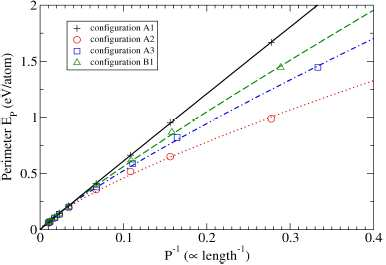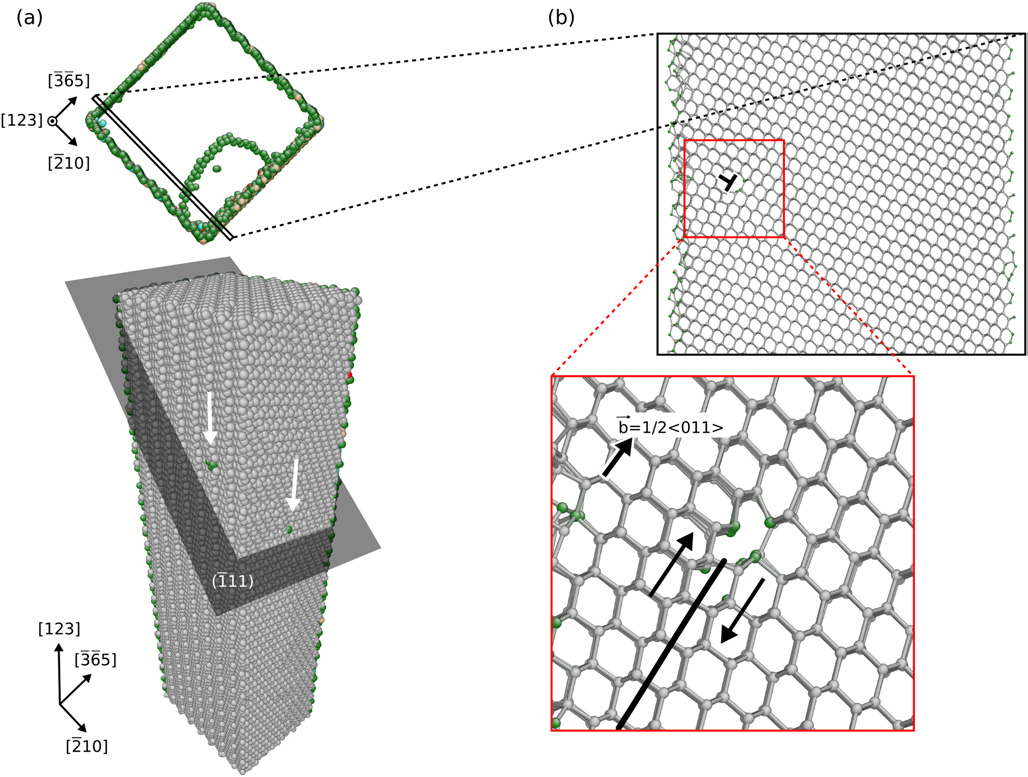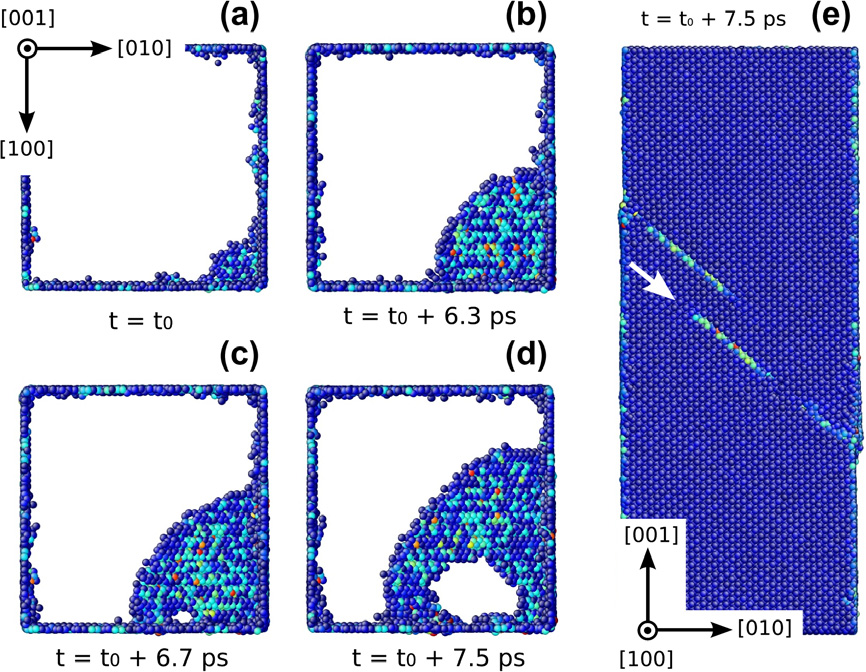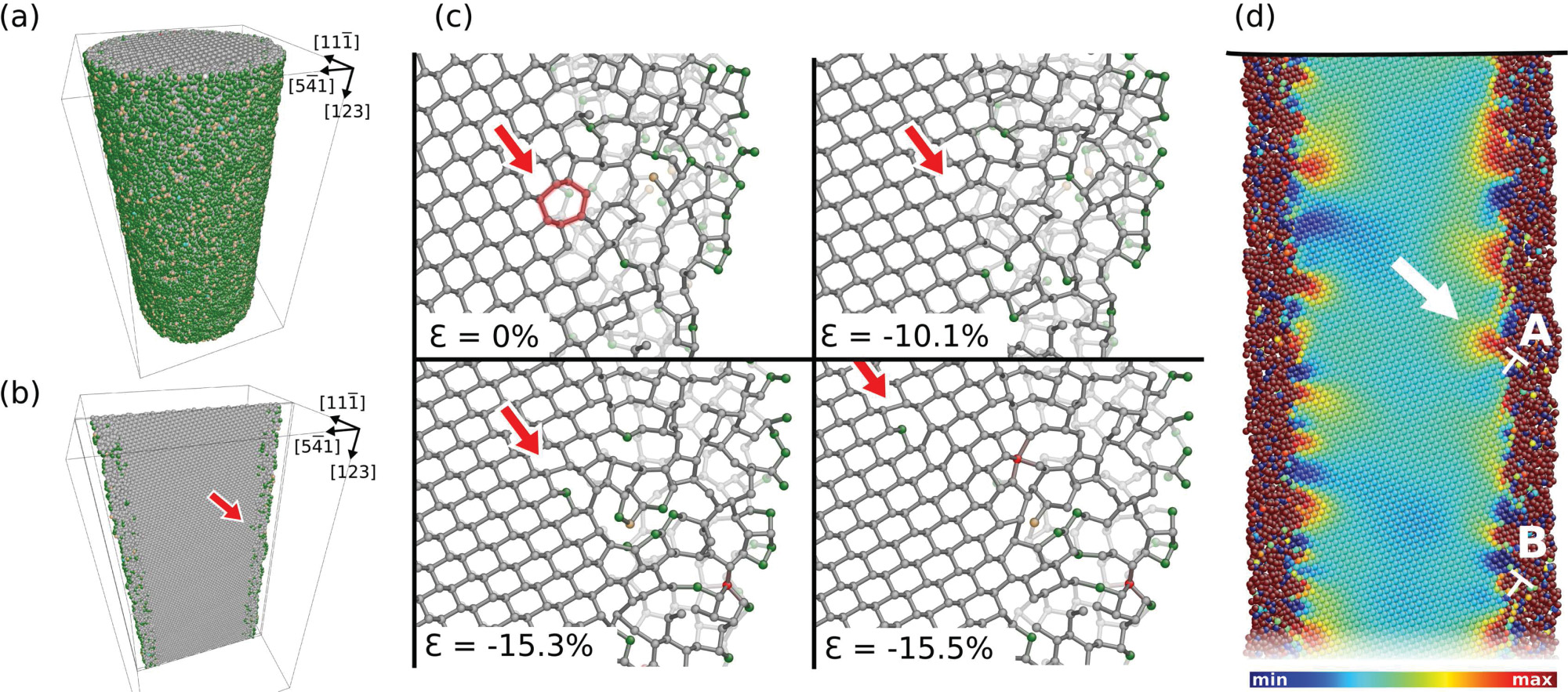Crystalline nano-objects like nano-pillars, nano-wires, nano-wiskers, etc., are often charaterized by a very low density or a complete abscence of structural defects. In addition, materials that are commonly brittle at the micro-scale, exhibit ductile behavior at the nano-scale. In such a case, the plasticity is initiated from surfaces. The onset of plasticity thus depend on dislocation nucleation instead of dislocation multiplication/interactions/transmission.
I investigate the onset of plasticity in silicon nanstructures, in particular in nano-pillars/wires.
We evidence the importance of considering the perimeter instead of the diameter while comparing nano-object (Fig 1). Also, the detailed strcture of the nano-object surfaces appear to be crucial for dislocation nucleation (Fig. 2).
Supported by abinitio calculations, we evidenced the activation of slip wihtin the {110} planes, that is unexpected for diamond silicon (Fig. 3). We demonstrated this feature to be the consequence of the nano-scale.
Real nano-structure are often coated with an amorphous outer-shell. In this context, we evidenced an onset of plasticity controlled by defects located at the crystalline amorphous interface (Fig. 4).

Fig. 1: perimeter energy as a function of perimeter lenght [DOI: 10.4028/www.scientific.net/KEM.465.89]

Fig. 2: nucleation of a perfect dislocation in a cubic-shaped silicon nano-pillar [DOI: 10.1088/0965-0393/19/7/074003]

Fig. 3: dislocation glide within a {110} plane in a silicon nano-pillar under compression. [DOI: 10.1016/j.actamat.2011.08.039]

Fig. 4: On set of plasticity controlled by interfacial defects in core-shell crystalline-amorphous nano-structured [DOI: 10.1103/PhysRevB.87.045201].
